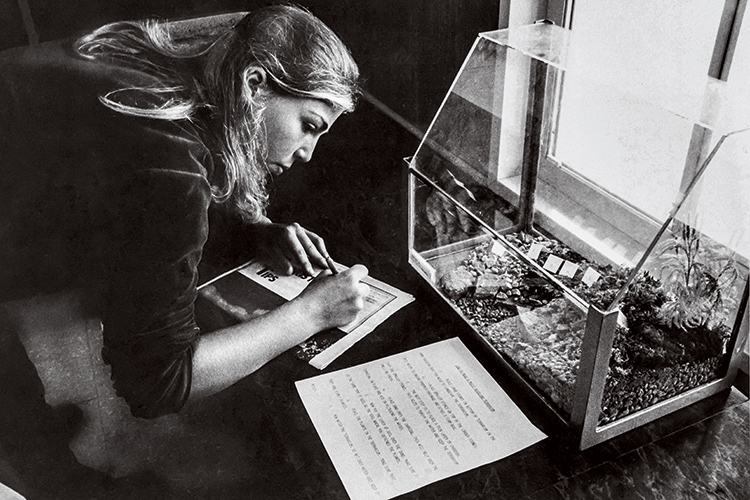Celebrating Pioneers and Progress
Welcome to the autumn Colgate Magazine. This is a noteworthy issue for several reasons.
As Volume L Number 1, it is the publication’s 50th volume — albeit by a different name (the Colgate Scene Vol I Issue 1 published in July 1972). It’s a fun coincidence to have the 50th volume celebrate the 50th anniversary of Colgate’s first official coeducational class.
The focus of this edition is special to me, having majored in women’s studies and magazine journalism in college. (No, I’m not a Colgate alumna; I attended Syracuse University — for which I’ve taken some ribbing from good-natured Colgate alumni over the years.)
When working on the articles about coeducation, I was fortunate to interview many remarkable women, such as Covette Rooney ’74, who is the first woman and only African American chief administrative law judge for the U.S. Occupational Safety and Health Review Commission. She and others I spoke to opened up about their experiences — the good and the bad — as some of the first women at Colgate.
It’s important to note that “there were women at Colgate before there were women at Colgate,” to quote Professor Emerita Wanda Warren Berry. In addition to female faculty members and administrators, a number of female transfer students arrived before the first coeducational class came in 1970. Their experiences were perhaps even more varied.
Elaine Matczak ’69 transferred to Colgate her senior year from Beaver College (now Arcadia University). She’d met Colgate professors and students during a joint orientation for a 1967 London study program. One of those students was Barnet Kellman ’69, whom she’d join in Hamilton and marry. Enrolling at Colgate in the fall of ’68, Matczak didn’t have a typical undergrad experience, being a married woman and living in a cottage in Earlville. “Professors were really open,” she says of her integrated academic and social life. “We had dinners at people’s houses and learned so much of how to live your intellect, your creativity, and your political orientation in dialogue with adults.”
Leta Caplan Smith ’72, who transferred from Skidmore in the fall of ’69, remembers male students’ curiosity about the opposite sex. “As much as a lot of guys wanted to go out, they also just wanted to speak with a woman,” she says. “They’d be willing to go for a walk — a whole bunch of them at a time — just to talk and laugh and be with a female.” Smith filled a void in the classroom as well. “I felt my voice was heard and needed as another opinion, [because] most of the classes I took were taught by men with [only] guys in the classroom.”
Of course, not all men — professors and students included — were accepting of women’s presence on campus. Some of the Black female students, especially, faced discrimination. They spoke of the difficulty of these times, but they supported each other and became even stronger.
What many women from these early years share was a genuine excitement to be on campus — to learn and enjoy the beauty of the Chenango Valley. They joined student clubs and started new ones, created their own majors, excelled academically, and fought for equality.
These women had grit. Former President Thomas Bartlett fondly describes seeing female students on their way to class, trudging through the snow in their army boots. (Bartlett himself should be commended for his progressive attitude, the time he spent persuading alumni who were against coeducation, and his push to enroll more women than the limited number recommended by the board.)
As we all know, the value of examining the past is that we then evaluate the present and look to the future. At the time of this writing, Wall Street welcomed its first major female CEO, Justice Ruth Bader Ginsburg became the first woman to lie in state at the U.S. Capitol, and the Pantone Color Institute unveiled a new shade inspired by the color of women’s periods.
Speaking of destigmatizing menstruation, female Colgate students started a new group called Progress Period. In this issue, you can read about this organization and others that are being furthered by current female students who are working toward social justice.
I hope you find inspiration in all of the women highlighted in this issue.
Until next time, stay safe and please be kind to each other.

